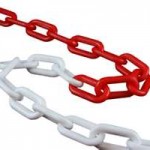Blog sites will do well to harness the advantages of internal linking as they seek to build a reliable network outside of their sites. Internal linking may provide benefits similar to those offered by external linking such as helping to improve search engine rankings for the site’s posts and pages. However, what it primarily does is to increase page views by encouraging readers to click on links within the site, thereby effectively increasing the total amount of time a reader spends on the site itself.
Internal linking suggests cohesiveness of articles and posts offered by a site. By suggesting related readings that can be found within, sites are able to present themselves as a more reliable source of comprehensive information. Many sites are already using plug-ins that create a sitemap page that provides links to posts required by readers. Links to related posts can also be conveniently placed at the end of posts.
The number of internal links can be increased by posting articles in a series. Since one post is directly related to the others in a series, internal linking makes sense. This option however should be used prudently to avoid creating the impression that articles are purposely being broken down to gain page views. Bloggers can also opt to provide periodic summaries of their posts which conveniently contains links to the most popular posts on the site. This is to allow inclusion of internal links while affording readers the chance to be made aware of missed articles.
Text links provide a chance to link to older posts. Bloggers who consistently spurn out quality content will find this internal linking option quite convenient to do. Internal linking should be done in a manner that encourages readers to spend more time on the site instead of appearing like a strategy to get more of the readers’ time.
Originally posted on February 29, 2012 @ 7:23 pm

